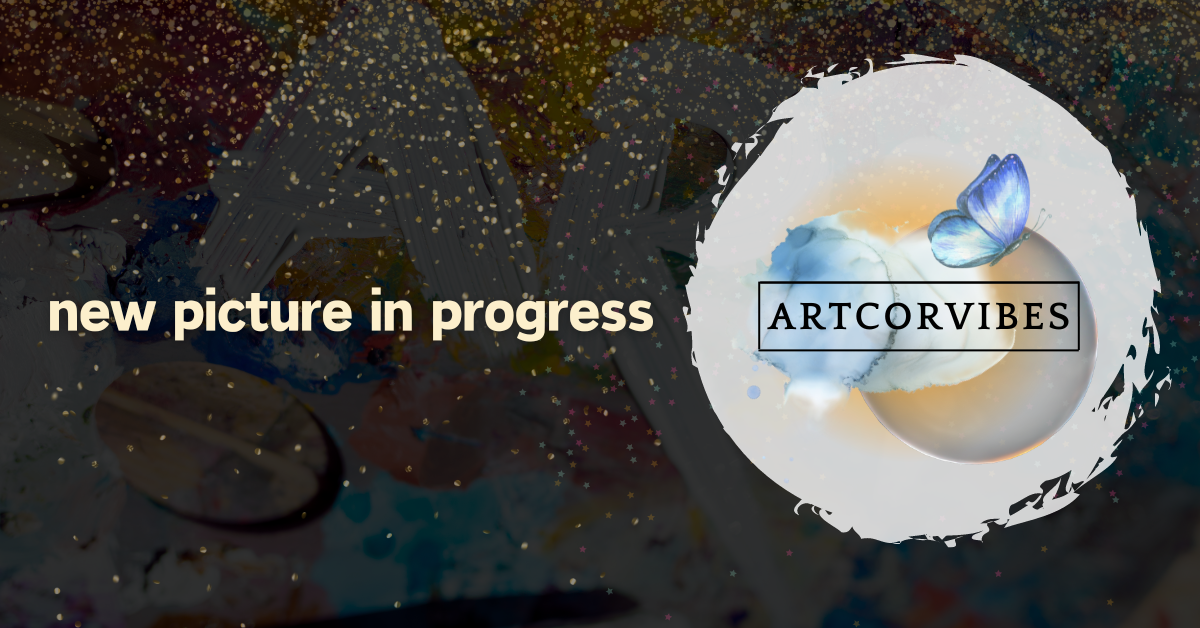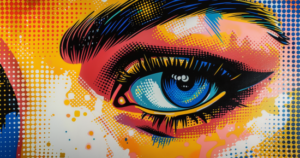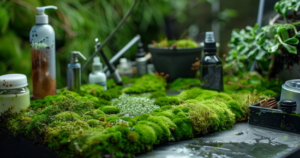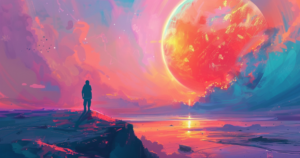Ever encountered the term “vibrant colors” during an art discussion and wondered what makes a color vibrant and how it impacts the artwork? In the context of art, “vibrant” denotes a lively, energetic display of colors that embody vigor and vitality. Vibrant colors are powerful, can strongly affect visual perception, capture the viewer’s attention, and evoke intense emotional reactions.
Vibrant Mean in Art
Artists often use vibrant colors to convey specific messages or symbolize certain ideas. For instance, red is a vibrant color that can symbolize strength, energy, and passion, among other emotions. Utilizing such colors in artwork not only affects the overall visual appeal but also adds depth and meaning to the composition. In short, a vibrant color palette in art helps to create visual interest, add emotional weight, and enhance the viewer’s engagement with the piece.
Next time you observe a painting or artwork, pay close attention to the use of vibrant colors and try to decipher the emotions or messages they might intend to convey. By understanding the significance of vibrant colors in art, you’ll be able to appreciate the creative choices that artists make, and forge a deeper connection with their work.
Understanding Vibrancy in Art
Defining Vibrancy
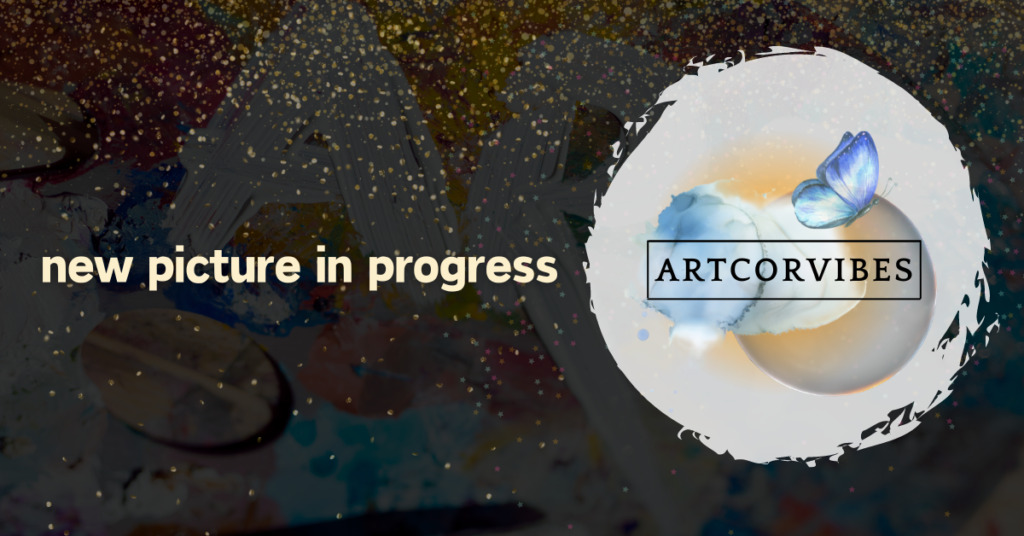
Vibrancy in art is all about the use of bold and intense colors to create a powerful visual impact. When you encounter a piece of art that uses vibrant colors, it immediately grabs your attention and evokes strong emotions. Vibrant colors can create a sense of energy and liveliness, making a painting or drawing come to life. It’s important to differentiate between vibrant and bright colors – while both are attention-grabbing, vibrancy often refers to the richness and saturation of the colors used.
Here are some features of vibrant colors in art:
- High saturation levels
- Intense hues
- Bold and eye-catching
- Evoke strong emotions
Historical Context
Vibrancy in art has played a significant role in various art movements throughout history. For example, during the Fauvism movement in the early 20th century, artists like Henri Matisse and André Derain used exuberant colors to create striking and emotional representations. This marked a significant departure from the traditional use of subdued and naturalistic colors in art.
Another example is the Pop Art movement of the 1950s and 1960s. Pop Art was influenced by mass culture and the bright, vibrant colors prevalent in advertising and comic books. Artists like Roy Lichtenstein and Andy Warhol employed vibrant hues to make bold statements and engage with contemporary culture.
To understand vibrancy in art, it’s essential to consider its historical context and the intentions behind the use of vibrant colors. By doing so, you’ll gain a deeper appreciation for the power of color and its ability to create visually dynamic and emotive pieces of art.
Incorporating vibrancy into your own artwork can be a powerful way to convey emotions, create a focal point, and make a lasting impression on the viewer. So go ahead, experiment with those bold hues, and see what vibrant energy you can bring to your creations.
Elements of Vibrant Art

Color Usage
In vibrant art, you will notice that the artists utilize bold and vibrant colors to create a distinct and recognizable style. This technique often includes using highly saturated colors and strong contrast, which helps the artwork stand out. In some cases, artists might combine complementary colors to create an eye-catching effect, taking advantage of the natural harmony between them. Exploring the elements of color can be a great start to understand the role of vibrant hues in art.
Visual Impact
The visual impact of vibrant art lies in its ability to command attention and leave a lasting impression on the viewer. Artists use a combination of bold colors, dynamic shapes, and eye-catching forms to create a visually stimulating experience. This strong visual presence often sets vibrant art apart from other styles, making it memorable and distinct. The technique also helps in conveying energy, movement, and a sense of excitement in the artwork.
Emotional Expression
One of the main reasons for using vibrant colors in art is their ability to evoke emotions. Artists know that colors have the power to influence your feelings and perceptions, and vibrant tones can create a unique and intense emotional response. Bright colors like red, orange, and yellow can make you feel energized and enthusiastic, while cool shades such as blue or green can bring calm and serenity. By skillfully playing with colors, artists invite you to reconsider the way you think, feel, and interpret their work.
Techniques to Achieve Vibrancy
Color Theory
Color theory is a crucial element in creating vibrant artwork. When you carefully select and mix colors, you can bring out the intensity and energy of your piece. To enhance the vibrancy of your artwork, consider using colors that are:

- Complementary: Colors that sit opposite each other on the color wheel (e.g., blue and orange, red and green, yellow and purple) create a strong contrast and can make your artwork pop.
- Analogous: Nearby colors on the color wheel can also create a sense of harmony and vibrancy when used together (e.g., red, orange, and yellow).
Contrast and Saturation

Another essential aspect of achieving vibrancy in art is the proper use of contrast and saturation. Here are some tips on how to effectively use these techniques in your artwork:
- Contrast: To create a sense of depth and make colors appear more vibrant, try using contrasting tones, such as placing dark colors against light colors or cool colors against warm colors.
- Saturation: Highly saturated colors tend to be more vibrant, so consider adjusting the intensity of your colors to make them more eye-catching.
Artistic Mediums

Lastly, the choice of artistic mediums plays a vital role in determining the vibrancy of your art. Each medium has its unique qualities that can contribute to the overall intensity of your artwork. Some popular mediums known for their potential for vibrancy include:
- Watercolor: With proper technique and high-quality paints, watercolor can produce a wide range of bright, transparent colors.
- Acrylics: Acrylic paints offer flexibility in terms of application and layering, resulting in bold, vibrant colors when used effectively.
- Oils: With their rich texture and slow drying time, oil paints can produce vibrant colors through layering and blending.
Experimenting with these techniques and artistic mediums will enable you to create more vibrant artwork and better understand what vibrancy means in the world of art. Keep practicing, and soon you’ll be able to effortlessly infuse your pieces with energy and color.
Influential Vibrant Artworks
Iconic Paintings
When it comes to understanding what vibrant means in art, some iconic paintings are fantastic examples. Vibrant art often features bold and vivid colors that evoke strong emotions, using intense hues to convey a sense of energy and life. One notable movement in art known for its vibrant use of color is Fauvism. Fauvist artists broke away from the traditional use of color, opting for a more expressive approach by using bright hues.
- The Dance by Henri Matisse: This famous painting is characterized by its vibrant colors, which emphasize the joy and movement of the dancing figures.
- The Red Vineyard by Vincent van Gogh: The artist’s use of bold red and orange hues in this piece showcases the energy and warmth of the scene.
Contemporary Pieces
Moving on to contemporary art, there are many modern artists who continue to employ vibrant colors in their work. From abstract pieces to hyper-realistic paintings, the essence of vibrancy resonates through various artistic styles.
- Yayoi Kusama: Kusama is a renowned contemporary artist known for her use of bright and vivid colors. Her Infinity Mirror Rooms installations are a prime example of her skillful use of vibrant hues.
- James Rosenquist: This contemporary artist is famous for his large-scale, vibrant pop art paintings that incorporate a wide array of bold colors, capturing the viewer’s attention.
Remember, you don’t have to be an artist to appreciate the power of vibrant colors in art. As you explore more paintings and contemporary pieces, you’ll come to understand how these dynamic hues bring energy, emotion, and depth to each artwork.
Interpreting Vibrancy in Art Criticism
When discussing vibrancy in art, you might wonder what exactly it means for a piece of art to be vibrant. In a nutshell, vibrant refers to the use of bright, bold, and intense colors that create visually striking, lively, and dynamic effects in an artwork.
As you explore and analyze vibrant artworks, start by observing how artists use these intense colors. Pay attention not only to the colors themselves but also to how they interact with each other and influence the overall composition. This could include specific techniques like color contrast, saturation, and the choice of color schemes.
To better understand the power of vibrant colors in art, consider the emotions and feelings they evoke in you, the viewer. Many artists utilize these colors to convey strong emotions or create eye-catching scenes that captivate their audience.
As you further analyze the artistic elements that contribute to the vibrancy of a piece, here’s a brief list of aspects you can explore:
- Color intensity: Bold and saturated colors tend to appear vibrant and energetic.
- Color contrast: The contrast between complementary or adjacent colors on the color wheel often results in striking visual effects.
- Color harmony: Different color schemes can help you achieve an aesthetically pleasing composition.
Remember, while you’re learning about vibrancy in art, it’s essential to understand the framework of art criticism as well.
This includes the following steps: description, analysis, interpretation, and evaluation.
This will not only enrich your understanding of the artworks but also enable you to appreciate the artist’s skill in using vibrant colors to create a memorable visual experience.
In conclusion, vibrancy in art is a fascinating topic that allows you to explore the power of color in creating captivating and emotionally evocative artworks. Whether you’re an artist or an art enthusiast, focusing on the elements that contribute to vibrancy can deepen your appreciation and understanding of art.
Happy exploring! Feel free to share your moments in the comments.
What is a cool color in art?
In art, cool colors include hues like blue, green, and purple, which are associated with calmness and can create a sense of coolness or distance in a composition.
Is white a vibrant color in art?
White is not typically considered vibrant. It’s a neutral that can enhance vibrancy of other colors when used for contrast or highlights.
How can I make my art more vibrant?
Increase color saturation, use complementary colors for contrast, incorporate neon or fluorescent hues, apply glazes or varnishes, and experiment with lighting effects to enhance vibrancy in your art.

